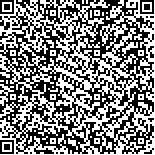| 摘要: |
| [摘要] 目的 观察急性肾衰竭(ARF)患者行经皮肾穿刺活检(PRB)的临床病理特征。方法 选取该院2006-01~2016-01收治的84例ARF患者为研究样本,均行PRB病理诊断,比较PRB术前及术后病理对ARF病因判断的准确性,记录PRB后治疗方案的调整情况以及治愈率,并对实施PRB的安全性进行评估。结果 84例ARF患者在PRB前明确病因60例,占71.43%。与术后病理对照,60例患者中56例判断正确,正确率为93.33%。PRB前未知病因24例,经PRB明确21例,分别为肾小管病变12例,急性间质性肾炎7例,新月体肾炎2例。PRB后病因明确81例,占96.43%,与PRB前病因诊断率(71.43%)比较显著增高(χ2=19.461,P<0.01)。PRB病理诊断后40例未调整治疗方案,34例调整治疗方案,10例改为其他治疗,如肿瘤所致ARF配合抗肿瘤干预,增生硬化性肾炎给予长期血透以及血管内瘘成形术干预。1个月后治愈患者49例,占58.33%。PRB后出现轻度并发症2例,表现为轻度肉眼血尿,未经干预自行缓解;重度并发症1例,有重度肉眼血尿,血色素较术前降低10 g/L。并发症发生率为3.57%。结论 ARF患者病因的准确判断是临床治疗的基本前提,实施PRB可显著提高病因诊断率,根据活检病理结果调整治疗方案可使临床获益,且PRB实施的安全性较高。 |
| 关键词: 急性肾衰竭 经皮肾穿刺活检 临床病理 |
| DOI:10.3969/j.issn.1674-3806.2016.12.05 |
| 分类号:R 69 |
| 基金项目:梅州市科技计划项目(编号:2006B07) |
|
| Clinical pathology and analysis of percutaneous renal biopsy in patients with acute renal failure |
|
LIU Qing-hua, XIE Shou-cheng, XUE Shao-qing
|
|
Department of Pathology, the People′s Hospital of Meizhou City, Guangdong 514031, China
|
| Abstract: |
| [Abstract] Objective To observe the clinical and pathological characteristics of percutaneous renal biopsy(PRB) in patients with acute renal failure(ARF).Methods A total of 84 patients with ARF admitted to our hospital between January 2006 and January 2016 were selected as the study subjects, all of whom were diagnosed by PRB. The accuracy rates of pathology for the judgment of ARF were compared before and after PRB. The adjustment of the treatment plan after PRB and the cure rate were recorded, and the safety of implementing PRB was evaluated.Results The causes of the disease of 60 cases among the study subjects were determined before PRB, accounting for 71.43%. Compared with the postoperative pathology, the diagnosis in 56 cases of 60 cases were correct and the accurate rate was 93.33%. Before PRB, there were 24 cases whose causes of the diseases were unknown. Among them, the causes of the diseases in 21 cases were determined by PRB, including 12 cases of renal tubular lesions, 7 cases of acute interstitial nephritis and 2 cases of crescent glomerulonephritis. After PRB, the causes of the diseases in 81 cases were known, accounting for 96.43%. Compared with those before PRB(71.43%), the diagnosis rate after PRB was significantly higher(χ2=19.461, P<0.01). After the pathological diagnosis by PRB, the treatment plans were unadjusted in 40 cases, but adjusted in 34 cases and were replaced by other treatments in 10 cases, including tumor induced ARF treated with anti-tumor intervention and proliferative sclerotic nephritis treated with long-term hemodialysis and vascular fistulaforming intervention. One month after the treatment, 49 cases were cured, accounting for 58.33%. After PRB, 2 cases had the complications of mild gross hematuria, and there were spontaneous remission without any intervention. One case had the complications of severe hematuria, and the hemoglobin decreased by 10 g/L. The incidence of complications was 3.57%.Conclusion The accurate diagnosis of acute renal failure is the basic premise of clinical treatment. The implementation of percutaneous renal biopsy can significantly improve the diagnosis rate. Adjusting the treatment plan according to the results of pathological biopsy makes the clinical treatment beneficial and the safety of the implementation of the percutaneous renal biopsy is relatively higher. |
| Key words: Acute renal failure Percutaneous renal biopsy Clinical pathology |

